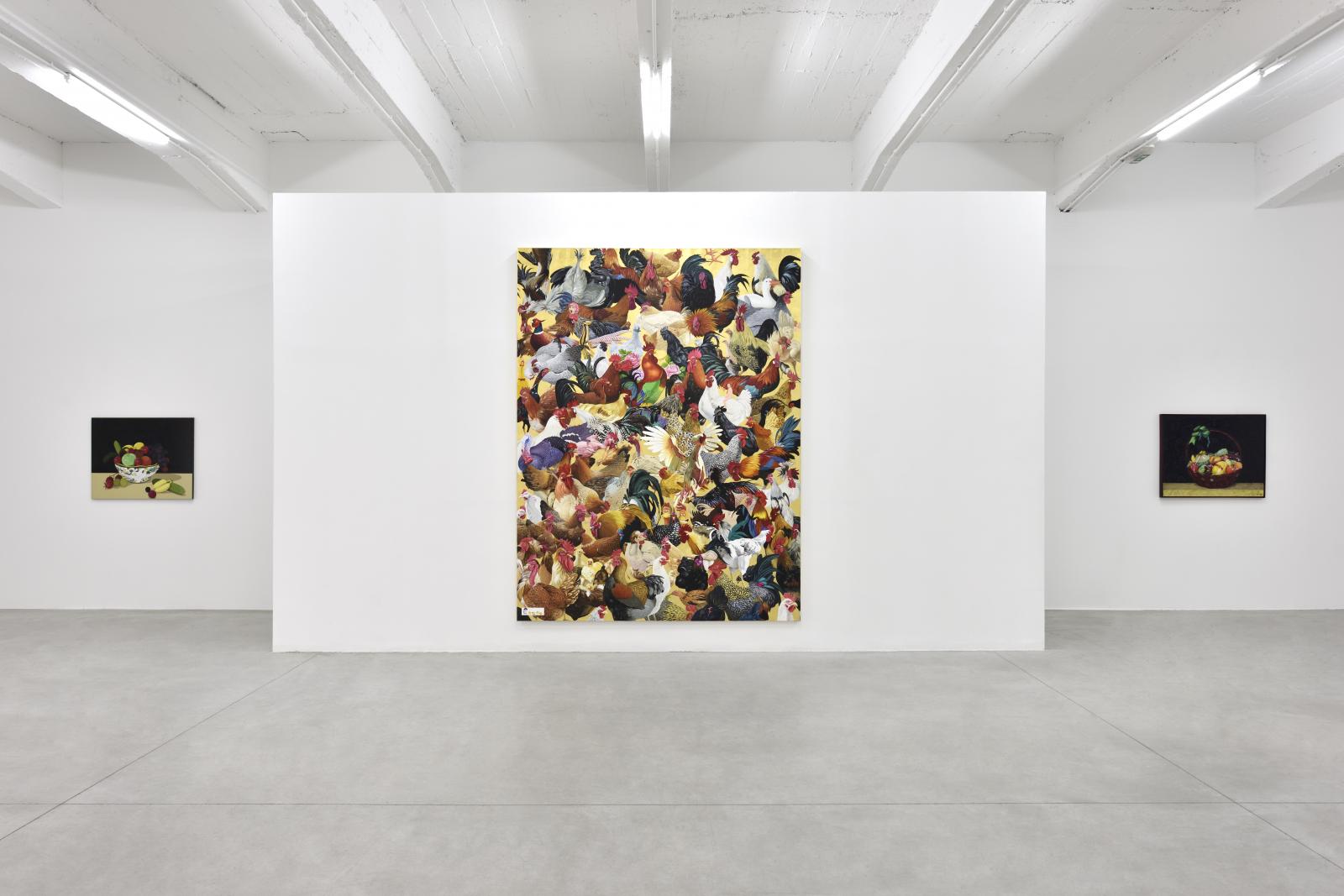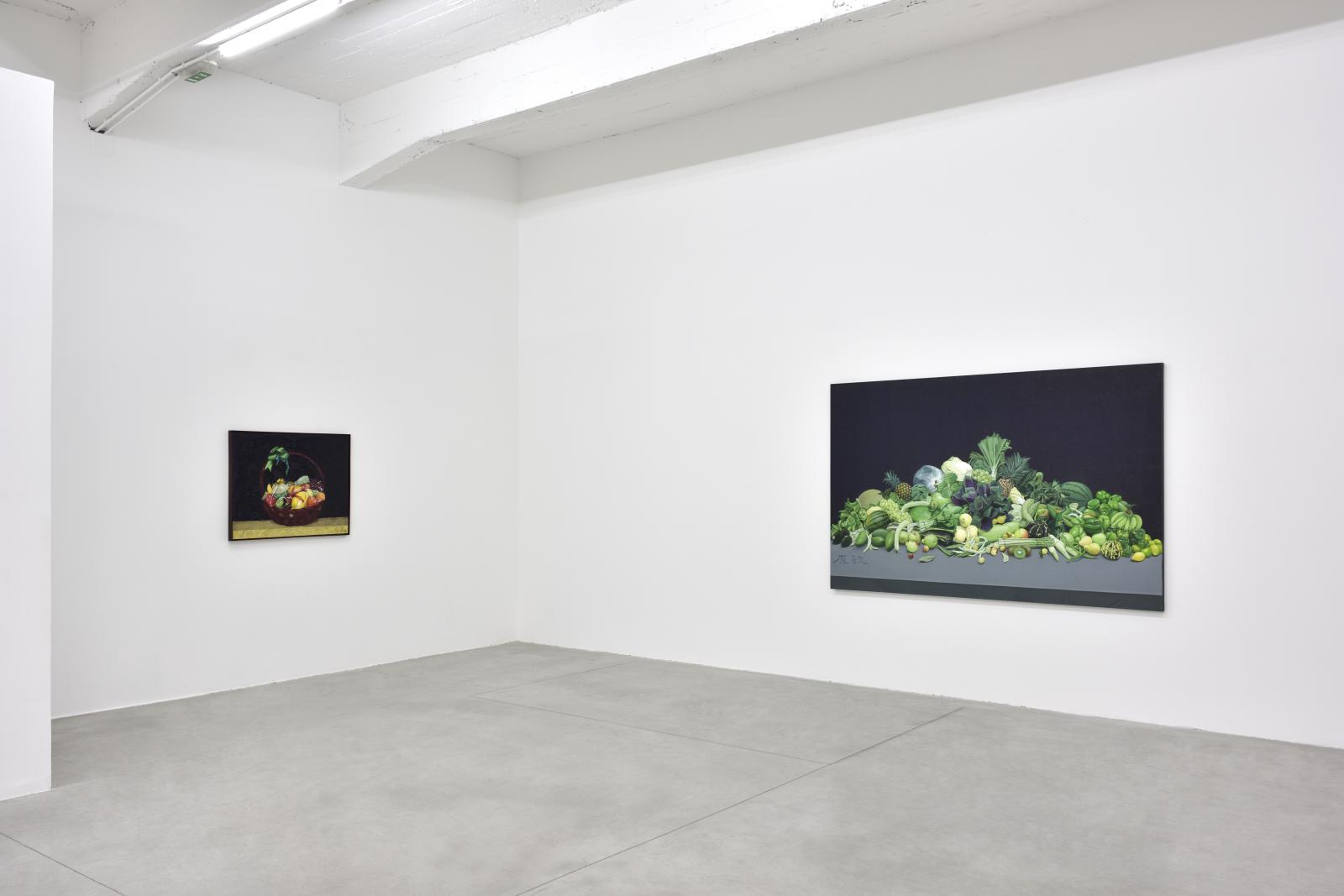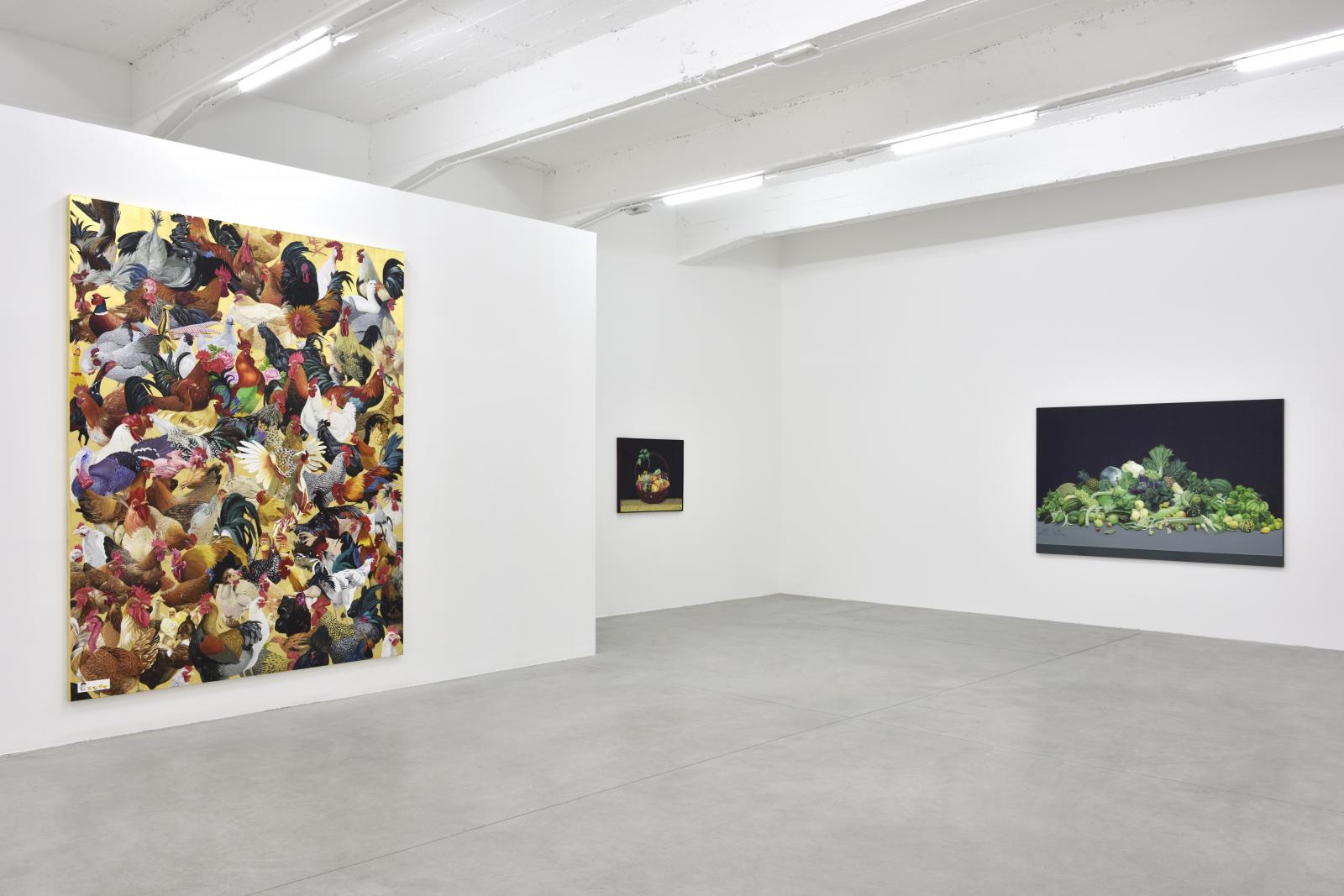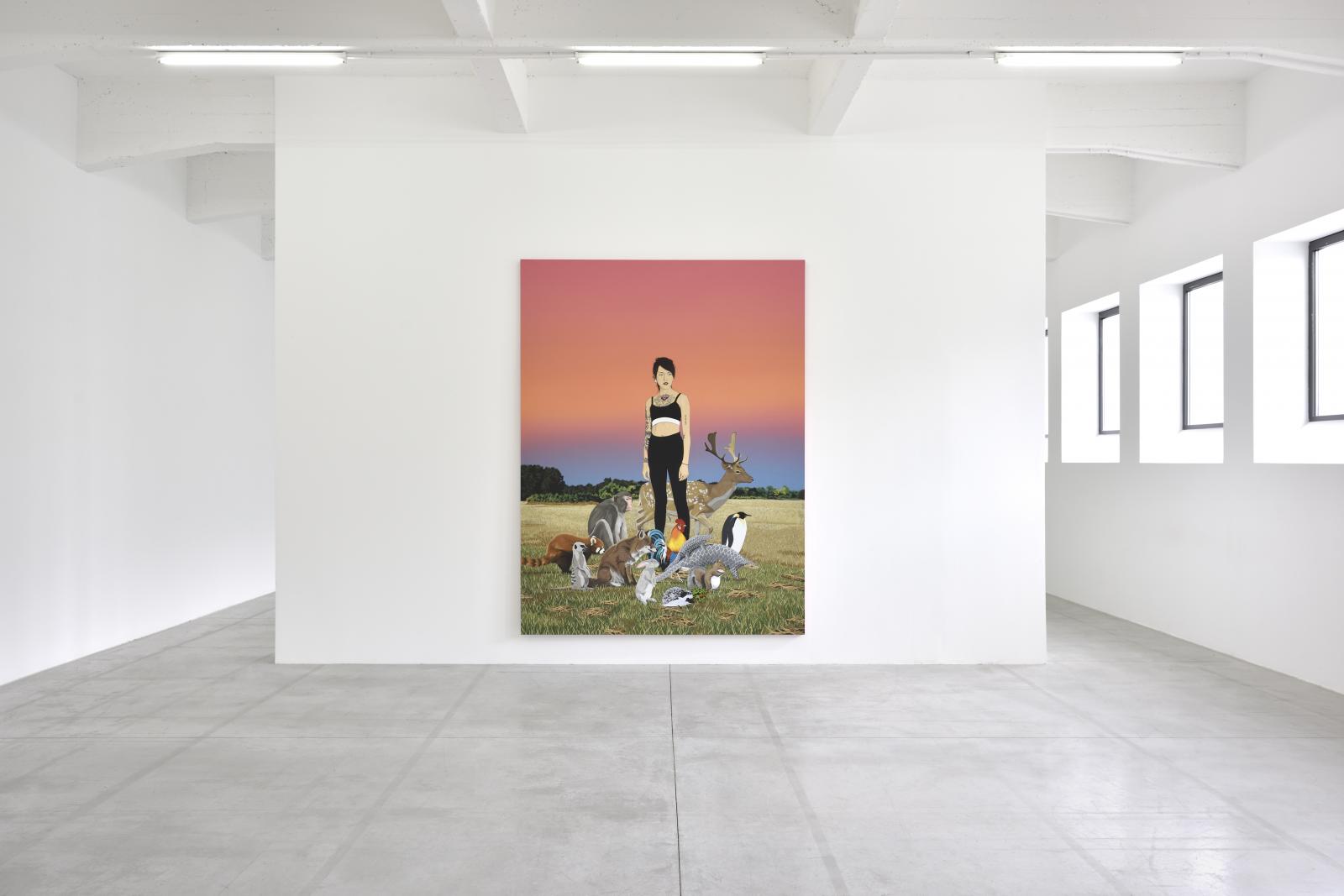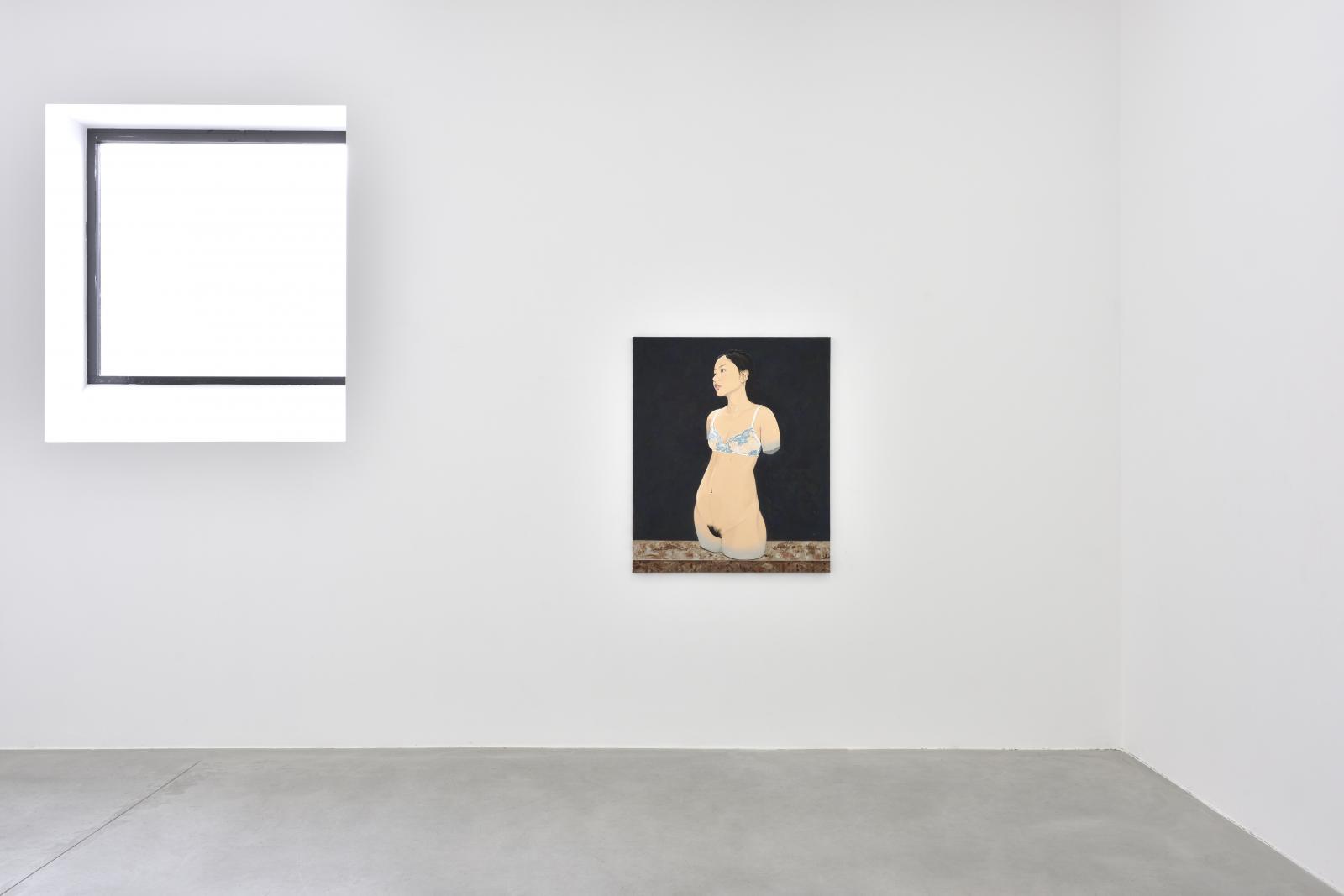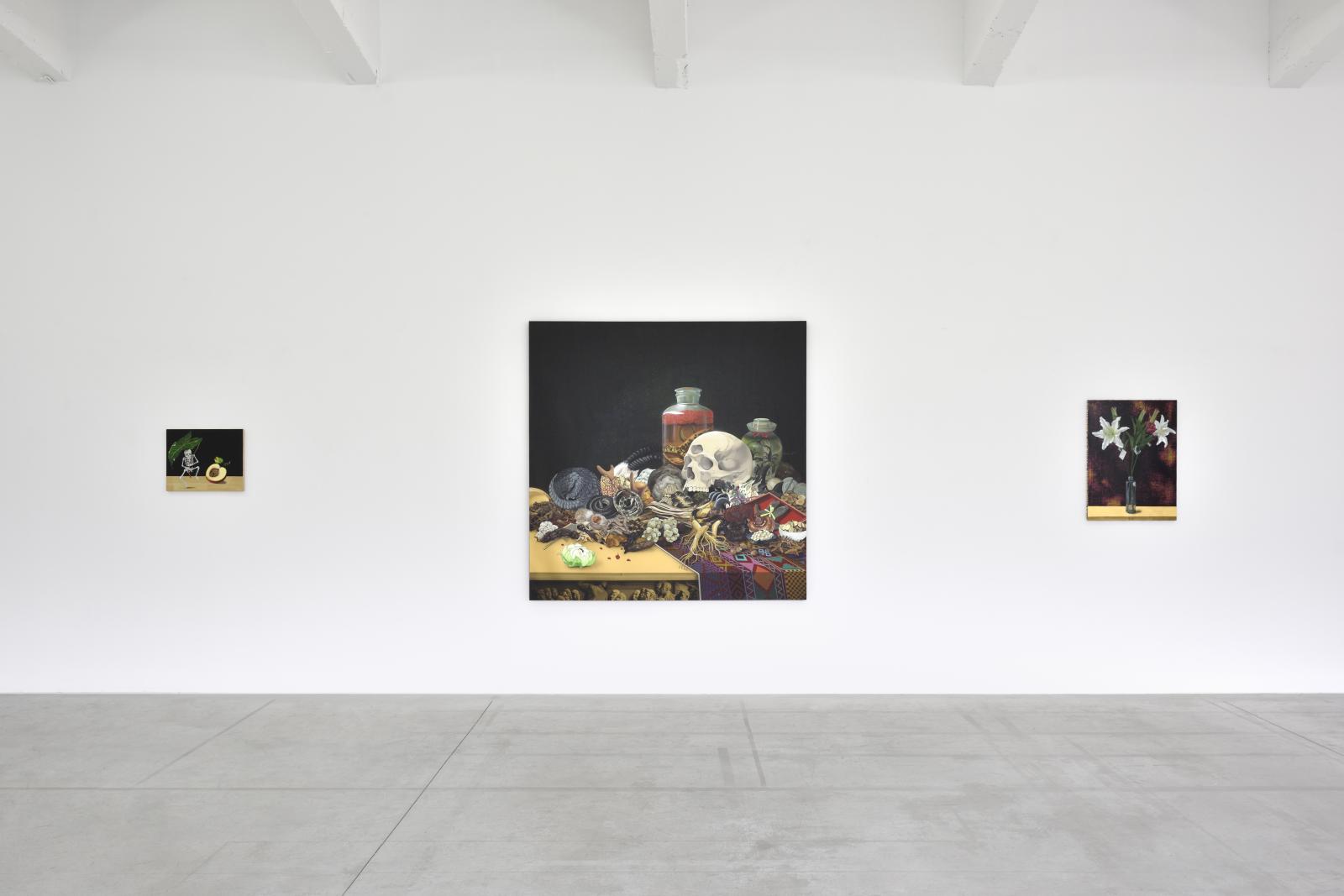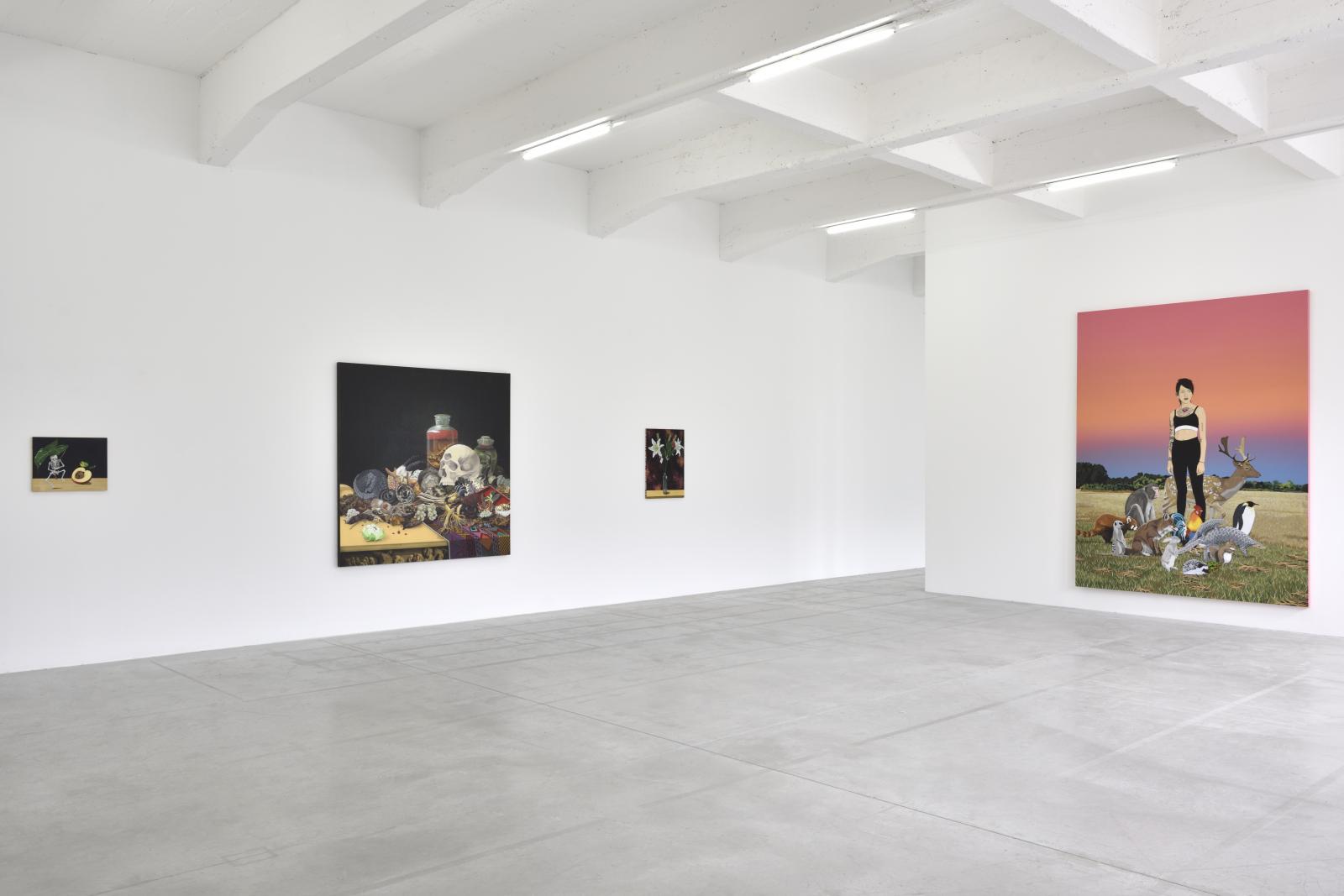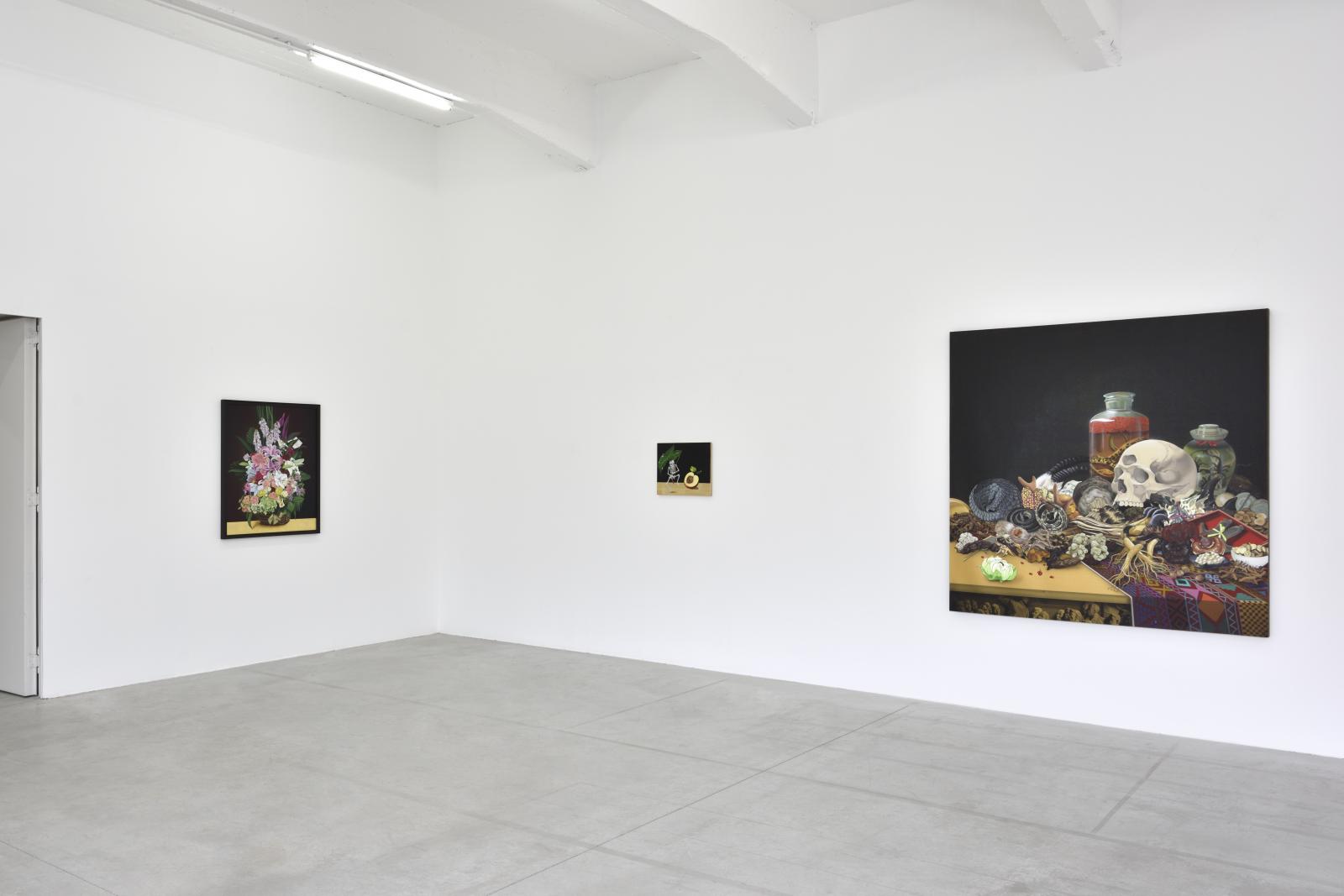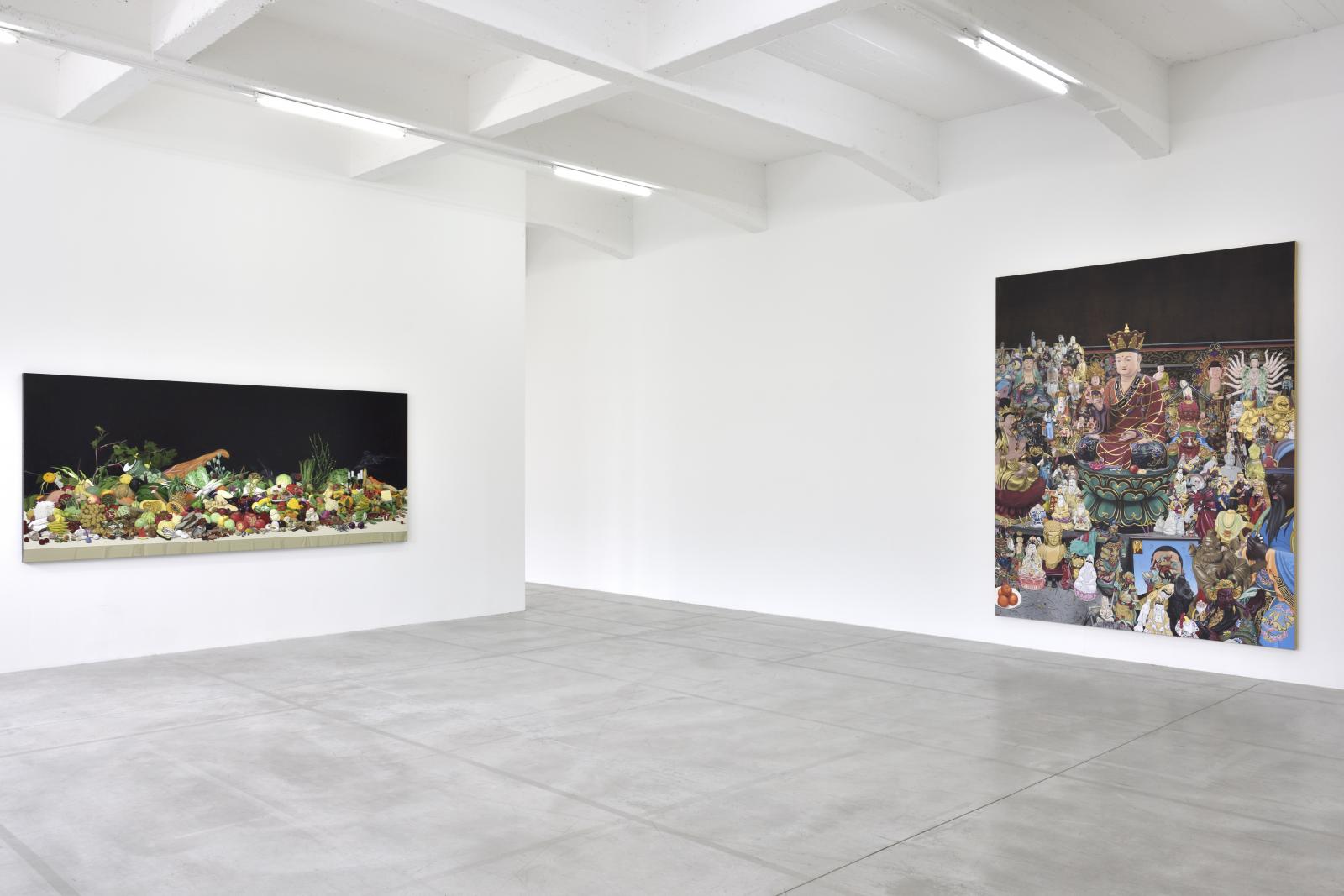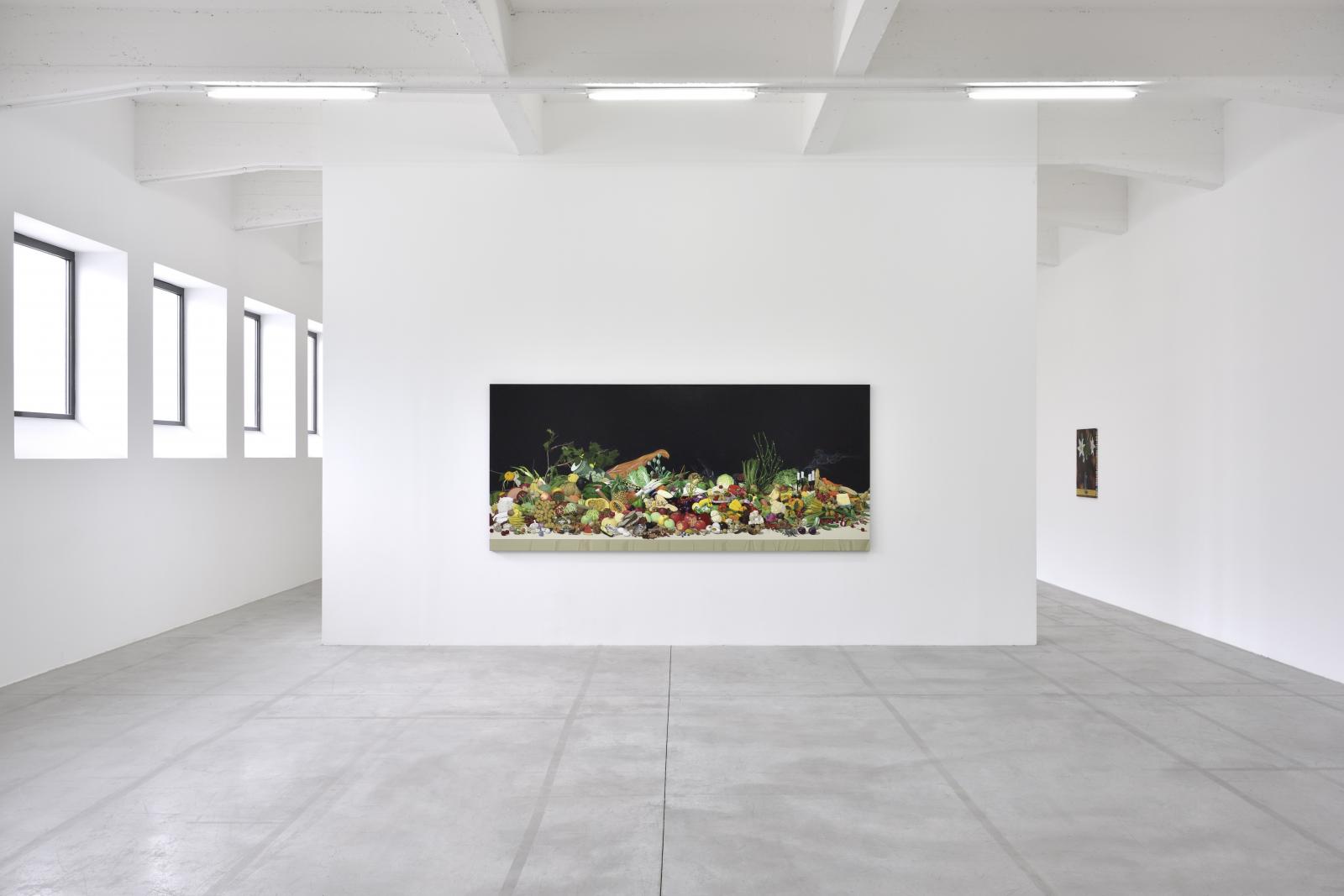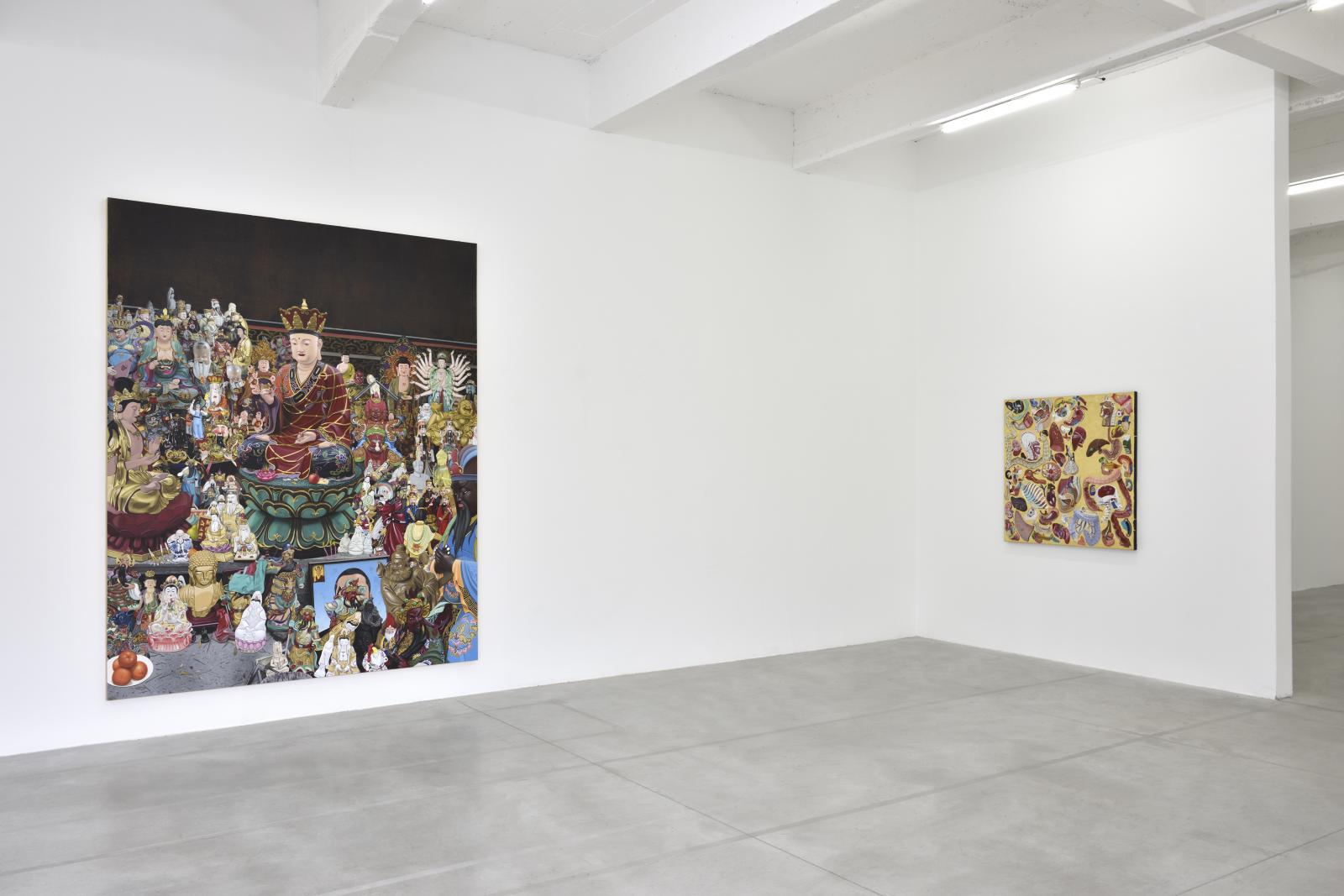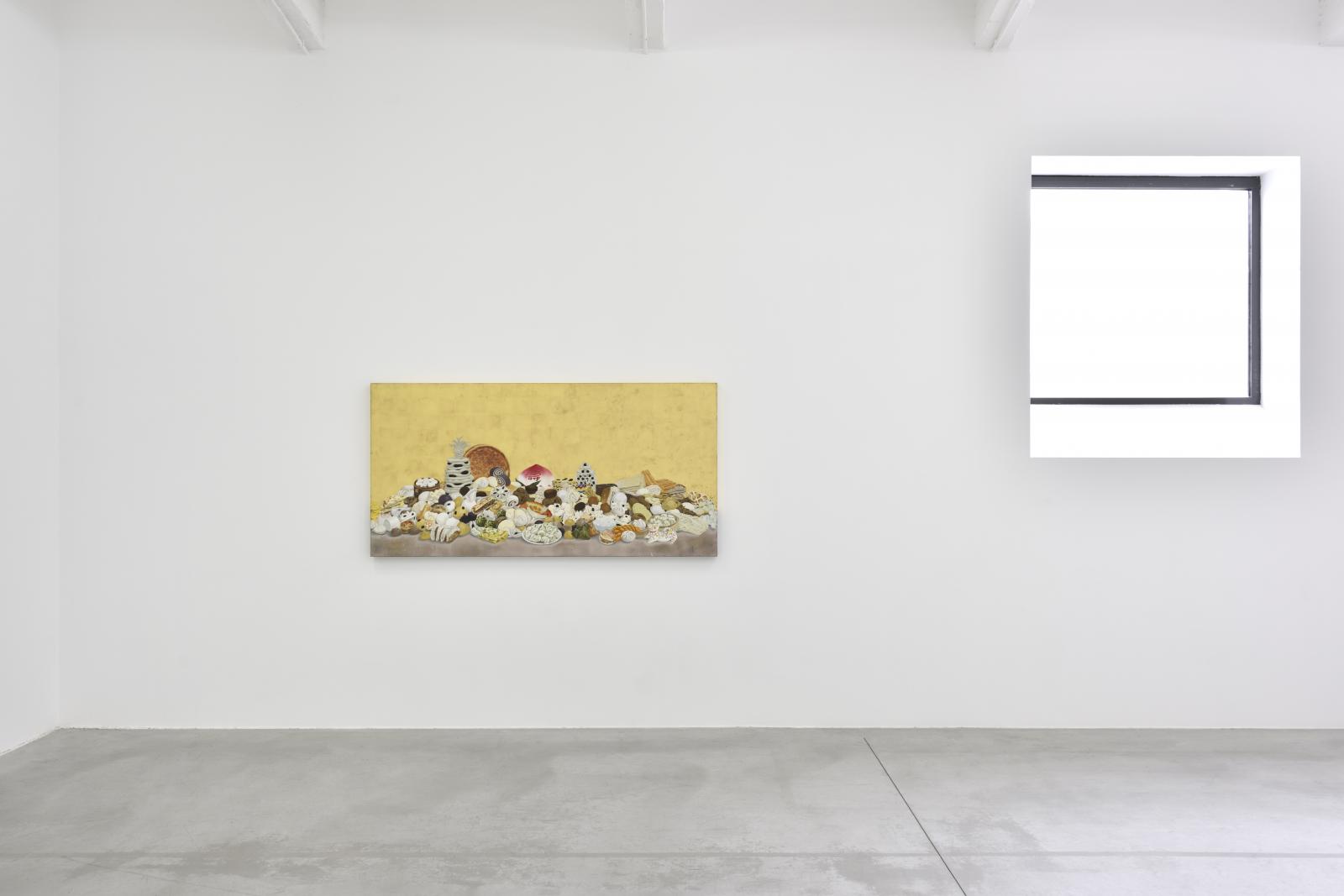Chen Fei
Grand Lobby
Born in 1983 in Hongtong, China. Lives and works in Beijing, China.
Supported by M Art Foundation as part of its commitment to the Consortium Museum’s Asia Pacific Society program.
With generous support from Perrotin.
Born in 1983 in Hong Tong, Shanxi Province, China, Chen Fei graduated from the Film Academy in Peking in 2005.
For his first institutional exhibition in Europe, the curators have asked the artist to present a group of still lifes and very large-format canvases with all-over compositions featuring arrangements of poultry or buddhas!
The painting is descriptive and precise with occasional impasto accents or backgrounds of gold leaf or red lacquer.
At once direct and explicit, at closer inspection the narrative nonetheless reveals a web of allusions in the form of characters and incongruous or comical situations.
Titled Grand Lobby, the exhibition brings together some seventeen paintings, two of which were made for this first institutional show in Europe.
The title is slightly ironic as if such an exhibition were designed along the lines of the welcome area of Chinese hotel lobbies, banks or public buildings, to begin with. Formal pomp quickly veering into flashy kitsch before being coopted a few decades ago by the commercial aesthetic of airport terminals and joining this endlessly reproducible group, blending cosmetic modernism and cultivated street culture.
The lobby as a postmodern mix of Arab majlis, Roman atrium, and all these entrance spaces, is here enlarged to “Grand,” granting it pomp and surface.
“It’s like entering a hotel lobby or a bed and breakfast run by the State, where we are immediately greeted by a painting that seems auspicious, emanating positive energy, and fulfilling a functional purpose. It’s this kind of inspiration and reflection that has informed my approach.”
Intentionally focused on the still lifes, enlivened with characters from the animal realm—roosters (Modern Times, 2021-2022), or religious figures, such as devotional buddhas (Incense Fire, 2021), or the human species (Natural History, 2016; Untitled, 2018))—the selection of paintings attests to the artist’s obvious desire to join the magnificent litany of genre painting spanning classical and modern history.
In the choice made here, the compositions are frontal, especially the still lifes of fruits and vegetables arranged along a table/tray cropped on either side by the edges of the canvas.
A still life akin to a detail of a huge classical fresco about which we know nothing else.
Of the iconic religious scene The Last Supper (the Holy Communion in Catholicism), Chen Fei has kept only the culinary ingredients.
It would be tedious but necessary to announce the fruits and vegetables in For Breadth and Immensity, 2018-2019, like an inventory comprising and organized by shapes and colors of edible objects on a tablecloth with the same vertical folds as the Last Suppers by Leonardo da Vinci, Andrea del Castagno, or Pieter Coeck d’Alost. The wide-format composition stops short at the edges of the cinemascope-sized canvas. In Forgive, 2020, the more monochromatic treatment of light and dark green, yellow and off-white hues adjoining the purple shades of vegetables accrue to form a flat triangle depicting a kind of lush green landscape, calling to mind Pieter Aertsen, Market Scene, 1569, Hallwyl Museum, Stockholm, whose lower register features an array of fruits and vegetables.
When an artist takes pleasure in challenging the still life conventions established by the sixteenth and seventeenth-century Dutch and Flemish painters, it inevitably involves delving into floral subjects, which are just as prescribed and codified with even greater symbolism and dazzling effects.
In the repertoire of flower pictures, the major categories of paintings are primarily divided into garlands, baskets of flowers, and bouquets in vases, and placed on the canvas according to a very specific symbolism, flowers picked for their striking effect, colors, and shapes. A true language of flowers was thereby elaborated.
Chen Fei has limited himself to vases of flowers (Friendship, 2022), exploring the quasi-banality of a few flowers—two white, one pink, and two more buds—striking a precarious balance in a transparent bottle, of those new cylindrical kind with a screw-on mouth for fancy mineral water served in restaurants created by the winners of culinary reality television shows.
Take a look at Daniel Seghers, Flowers in a Glass Vase, 1635, Toledo Museum of Art, and so many others scattered across the major museums worldwide since they came from private collectors who coveted these decorative and historical paintings.
Yet, we hear the artist mentioning other sources, other references, which he cites as so many ways of approaching painting:
“I think that this series of paintings originated from my beginnings in painting. For instance, I feel there are many subjects I want to paint, but they are fundamentally related to the environment in which I live. I find that taking a direct and literal pictorial approach often lacks meaning and can also seem limited.
Although I mentioned my desire to explore themes like geopolitics, social class, history, or various aspects of contemporary reality, painting these themes directly could easily resemble something that looks like satirical caricature. Instead of this, I use still life like a receptacle or container to integrate these themes.”
But also taking into account his embeddedness in a highly political country, Chen Fei offers us other clues that shed light on his work:
“In Shanghai, for instance, there was a famous artist called Li Mubai, who painted cigarette box models and girlie calendars. His style and forms were a source of inspiration for me. After 1949, artists like him were constrained to create works focused on specific functional themes. Their work shifted toward “functional painting” in response to the historical and political needs of the era. It entailed especially themes related to the positive and edifying values of socialism or works for the purpose of educational propaganda. There was also an array of promotional paintings designed to support various forms of propaganda. This shift reflected the changing role of art in society at that time, when creativity was directed toward social and ideological aims.”
— Franck Gautherot & Seungduk Kim
